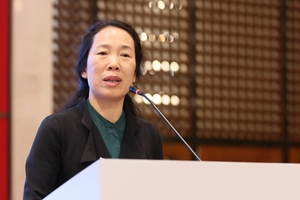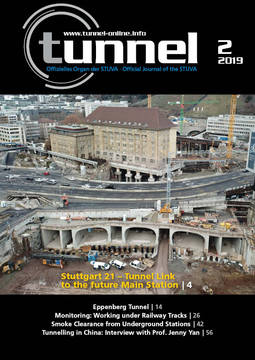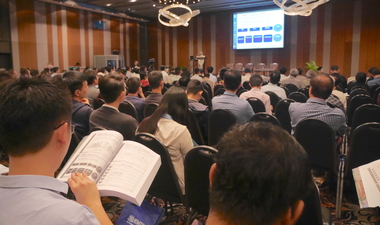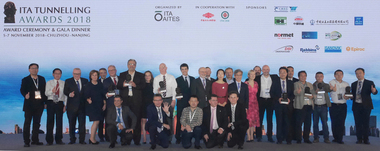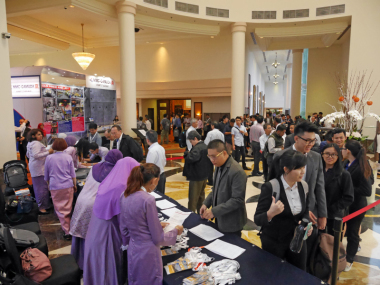Prof. Jenny Yan about Tunnelling in China
Professor Jinxiu (Jenny) Yan is currently the vice president of the ITA, vice president of the Chinese Tunnelling and Underground Works Society of CCES and deputy general manager of China Railway Academy Co., Ltd. She has been working in the tunnelling industry for more than 30 years. As the team leader for research, consulting and design, she has been involved in the most challenging railway tunnels, highway tunnels, metro and water tunnel projects in China, Malaysia, Laos, Nepal and Morocco etc.
China is one of the biggest tunnelling markets in the world. Could you describe briefly the tunnelling in China in general?
By the end of 2017, China built and put into service 127 000 km railways, including 25 000 km high-speed connections. On these railway lines, there were 14 700 tunnels, adding up to a total length of 15 781 km. At the same time, China built 4.77 million km of highways, among which 136 000 km were expressways. On these highway lines, there were 16 281 highway tunnels, adding up to a total length of 15 240 km.
Mass transit growth in China continues and even accelerated in the past few years. This growth is not new, of course, Chinese cities have been adding mass transit systems rapidly over the past several decades. By the end of 2017, there were 165 rail-transit lines in 34 cities, adding up to a total length of 5033 km, including 3884 km underground. Almost all large cities in China have rail-transit systems in operation, under construction or in planning stage.
In the past five years, China has seen a huge increment of various traffic tunnels becoming operational, including 1400 km for railway and 1000 km for highway tunnels yearly. In 2016, 760 km metro has been put into operation and 889 km in 2017. In total, 36 103 km traffic tunnels were in operation by the end of 2017, not to mention a large number of tunnels for hydro power, water transfer, utilities and other purposes. The total length of Chinese tunnels amounts to around 45 000 km. At present, there are about 20 000 km of tunnels under construction and another 20 000 km are in the design stage.
Do you plan to attract more international participants?
The progress of tunnelling in China would not have been possible without the knowledge and experience sharing and strong support from the international tunneling industry. Many international companies have contributed a lot, such as TBM manufacturers, equipment manufacturers for drill and blast, material suppliers as well as suppliers of technical instruments and international consulting companies.
Meanwhile, the development of tunnelling technology in China also contributes to the international tunneling industry. There is a huge number of tunnelling projects in China, and the experiences and lessons learnt from those projects over the past 40 years have been very costly and are valuable to those countries who are going to tackle similar projects. We are ready to share these experiences internationally, through conferences, symposia, workshops and other media, the same way we have been helped in the past.
Jenny, could you give some examples of flagship projects?
The Queershan Tunnel, as an example for highway tunnel construction, conquered a great number of technical problems during construction in high altitude and cold plateau regions. National Road No. 317 (G317) built in 1951 is an important channel for transportation between China‘s Tibetan areas and the mainland. Due to the a 10 months snowfall period and natural disasters like avalanches and debris flows, the Queershan Mountain section of G317 is known as “the most dangerous road in China”.
The Tunnel consists of a 7079 m long main tunnel and a 7108 m long pilot tunnel, with the entrance at an altitude of 4378 m. The tunnel was completed 15 years after the launch of the project and opened to traffic in September 2017. Vehicles now can pass through the Queershan in just over 10 minutes and have no longer to go around for more than two hours on dangerous mountain roads.
As a solution to directly pass through high mountains and shorten travel time, railway tunnels play an important role in the development of railway networks in China. The epic project New Guanjiao Tunnel is a typical case. The 32.7 km long tunnel and is a key project of the second line of the Xining-Golmud section of the Qinghai-Tibet Railway. It is the longest railway tunnel in China. Before the opening of the tunnel in 2014 the existing railway had to climb over Mount Qinghai Nanshan in a time-consuming way. The new tunnel reduces the travel time in this section from two hours to only 20 min and greatly boosting the economic development of Qinghai Province and Tibet Autonomous Region.
China and Uzbekistan have successfully built the first railway tunnel together, overcoming difficulties during the construction. The Qamchiq Tunnel in Uzbekistan is the longest railway tunnel in Central Asia. It has been completed and put into operation in June 2016. The 19.2 km long tunnel runs through the Qurama Mountains and is part of the 169 km long Angren-Pop railway line, a major state project of Uzbekistan, which connects the capital Tashkent with the eastern city of Namangan. The travelling time for the section of this tunnel was greatly shortened from 2.5 hours before to only 17 minutes now. The construction of the Angren-Pop railway was an important and difficult project. However, the project only took 900 days and was ahead of schedule by nearly 100 days.
What do you think is necessary to prepare Chinese tunnelling engineers for international projects?
About 20 000 km of tunnels will be built in the near future. Most of them are quite challenging, not only due to their size – such as super long tunnels, very deep tunnels, large diameter tunnels – but also because of complex conditions, such as tunnelling in active faults, permafrost, high ground temperatures as well as tunnelling in unpopulated areas etc. China needs more help and involvement from the international tunnelling industry to overcome these challenges together.
Which targets do you and the tunnelling society of China have for the future?
My first involvement in ITA was 1990, nearly 30 years ago.
I deeply understand the extreme importance for international exchanges and cooperation, in which the ITA plays a key role in this regard. I have been the “tunnel” linking the Chinese tunnelling industry with the ITA for many years.
The Chinese Tunnel and Underground Works Conference (CTUC) is organized every two years. In the past two events, international sessions were jointly organized by CCES (China Civil Engineering Society) and ITA. Five ITA presidents or past presidents gave lectures in the session of 2016 and major tunnelling projects worldwide have been addressed in 2018. CTUC has been growing very fast. The coming event of CTUC 2020 is expected to exceed 2000 participants. At the same time, CTUC will be turned it into a fully international conference in 2020.

